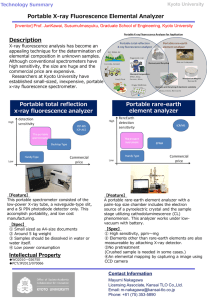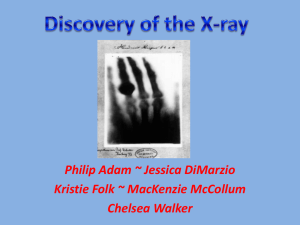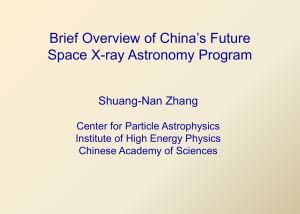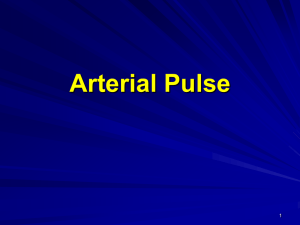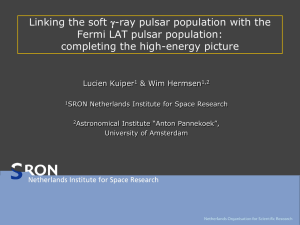Biswajit Paul
advertisement
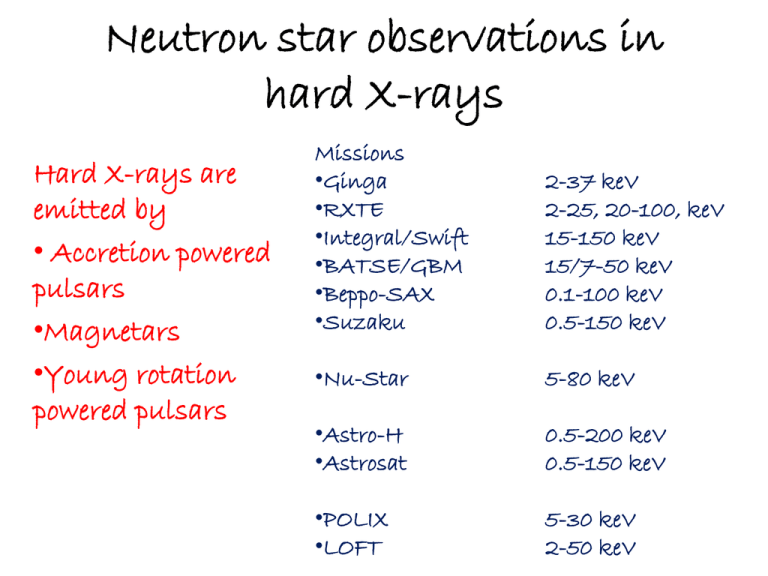
Neutron star observations in hard X-rays Hard X-rays are emitted by • Accretion powered pulsars •Magnetars •Young rotation powered pulsars Missions •Ginga •RXTE •Integral/Swift •BATSE/GBM •Beppo-SAX •Suzaku 2-37 keV 2-25, 20-100, keV 15-150 keV 15/7-50 keV 0.1-100 keV 0.5-150 keV •Nu-Star 5-80 keV •Astro-H •Astrosat 0.5-200 keV 0.5-150 keV •POLIX •LOFT 5-30 keV 2-50 keV Magnetars •Magnetars 1013-15 Gauss (SGR, AXP) •Short lived evolutionary track of the magnetars after birth good fraction of all neutron stars are probably born as magnetars •Highly variable in their X-ray emission properties. •Huge outbursts once every few decades •Active phase: bursts with random time difference and random intensity occur •X-ray pulses and the pulse profile shows long term variations, sometimes with associated spectral changes. •A a very challenging class motivated many theoretical work. Magnetars •Strong hard X-ray emission with multiple spectral components, pulsating differently between them and differently with the soft component. •Association with the highest magnetic field radio pulsars, •Quasi-periodic oscillations clue to the internal and crustal structures of the neutron stars. •The spin phase dependence of the short bursts of magnetars. Magnetar hard X-ray emission Magnetar hard X-ray emission Magnetars •Hard X-ray pulse profiles, pulse profiles of different spectral components and long term variabilities of all of these. •Measurement of hard X-ray spectrum of several magnetars •Study of the long term variations of the pulse profiles and the spectra, • Test the magnetar models Young Neutron Stars •Only a small fraction of the spin-down energy is emitted in the radio band. Much larger fraction of the spin-down energy in high energy band, X-rays and Gamma-rays. •Soft X-ray and amma-ray emission seen in many objects. •Recently, pulse hard X-ray emissions have been detected in several pulsars. •Pulsar modes to be tested over the widest energy band possible. Rotation Powered Pulsars Hard X-ray emission Energy dependent pulse profiles Accretion Powered Pulsars Spin-evolution, Quasi-period Oscillations Orbital evolution, orbital glitches Broad band spectrum Energy dependence of pulse profiles Luminosity dependence of pulse profiles Cyclotron lines Cyclotron lines: pulse phase dependence Cyclotron lines: luminosity dependence Cyclotron lines: luminosity dependence of the pulse phase dependence Cyclotron lines: pulse profile dependence of the pulse phase dependence Energy dependent pulse profiles Luminosity dependent pulse profiles Orbital evolution of X-ray binaries LMC X-4 CenX-3 SMC X-1 4U 1538-52 Double Compact Binaries Gravitational Wave Emitters Short Gamma-ray Bursts XTE J1808-5635 Cyg X-3 XTE J 1810-271 EXO 0748-676 XTE J1710-281 4U 1822-37 Her X-1 Her X-1 Cycltron lines Luminosity dependence Pulse phase dependence Dips in Pulse Profiles : Partial Covering Absorption 16 Dips in Pulse Profiles : Partial Covering Absorption 17 NuSTAR NuStar Broad band spectrum with good energy resolution of moderate/faint objects Long exposure required: limited number of sources Limited scope for pulse phase resolved studies ASTRO-H ASTRO-H c Astro-H Broad band spectrum with good energy resolution of moderate/faint objects Micro-calorimeter Very broad band Long exposure required: limited number of sources Limited scope for pulse phase resolved studies ASTROSAT IXAE Indian X-ray Astronomy Instrument Onboard IRS-P3, 1996 Large Area X-ray Proportional Counter ASTROSAT Ground Trace Pulsar Cyclotron lines Cyclotron lines studies with LAXPC Chandreyee Maitra 2012 Thermonuclear X-ray Burst Reprocessing 31 Reprocessing in EXO 0748-676: XMM-Newton Observations Hard X-ray Quasi Periodic Oscillations Astrosat Good for moderate/bright sources time/phase resolved studies Multi-wavelength observations Stable background X-ray Polarimetry Polarised X-rays 36 Accreting X-ray Pulsars Image: NASA Meszaros et al. 1988 37 POLIX 38 X-ray Polarimeter Polarisation is unexplored in High Energy Astrophysics X-ray emission from the following processes should be polarised Measurement Technique •Cyclotron Anisotropic Thomson Scattering •Synchrotron •Non-Thermal Bremsstrahlung •Scattering from non-spherical plasma These objects should produce polarised X-ray radiation •Accretion powered pulsars Crab nebula is the only source for which X-ray polarisation measurement •Rotation powered pulsars exists. This was made in 1976 !! •Magnetars Approved mission: GEMS •Pulsar wind nebulae •Non-thermal supernova remnants •Black holes, micro-quasars and active galactic nuclei 39 Test Setup CNC CONTROLLER CNC ROTARY TABLE DETECTORS rotation axis 40 Test Results Rishin et al. 2010 41 Engineering Model The mechanical configuration 42 Development Status Rishin et al. 2012 43 Thomson X-ray Polarimeter Proposal submitted to ISRO Included in ISRO’s 5 yr plan Key features of the polarimeter •Minimum detectable Polarisation of 2% at 5 sigma level for a 50 mCrab source •No of sources: 50 •Weight: 110 kg •Data rate: 300 Mb per orbit Collimator Scatterer Detectors Spacecraft requirements •Spinning platform/satellite, 0.5-5 rpm •Very long exposures required, one week to one month •Pointing accuracy required: 0.1 degree •Equatorial orbit, less than 10 degree •Altitude: 500—600 km 44 HXMT, SVOM, LOFT



